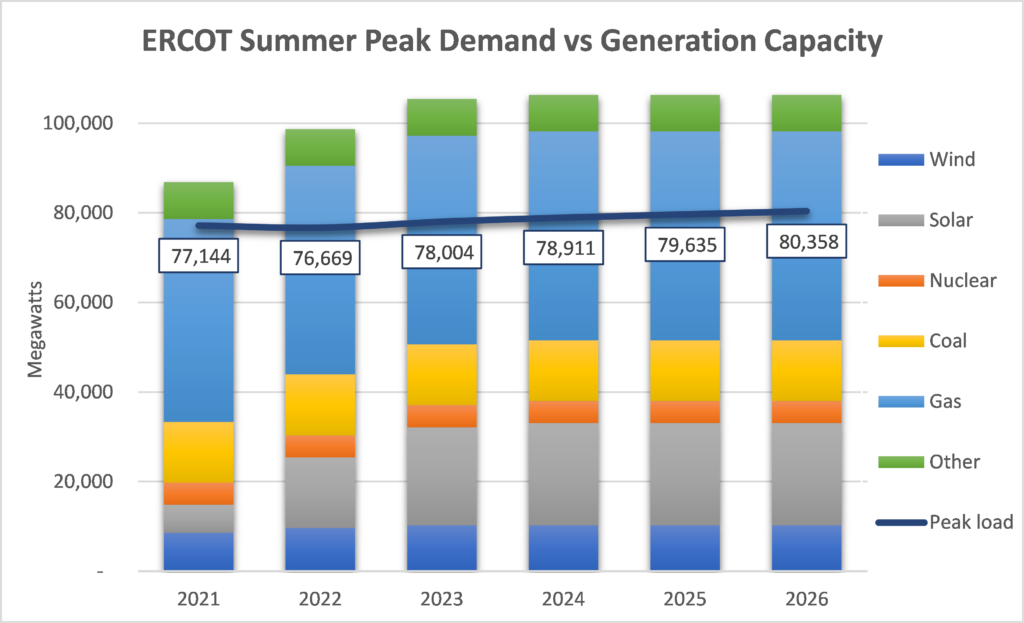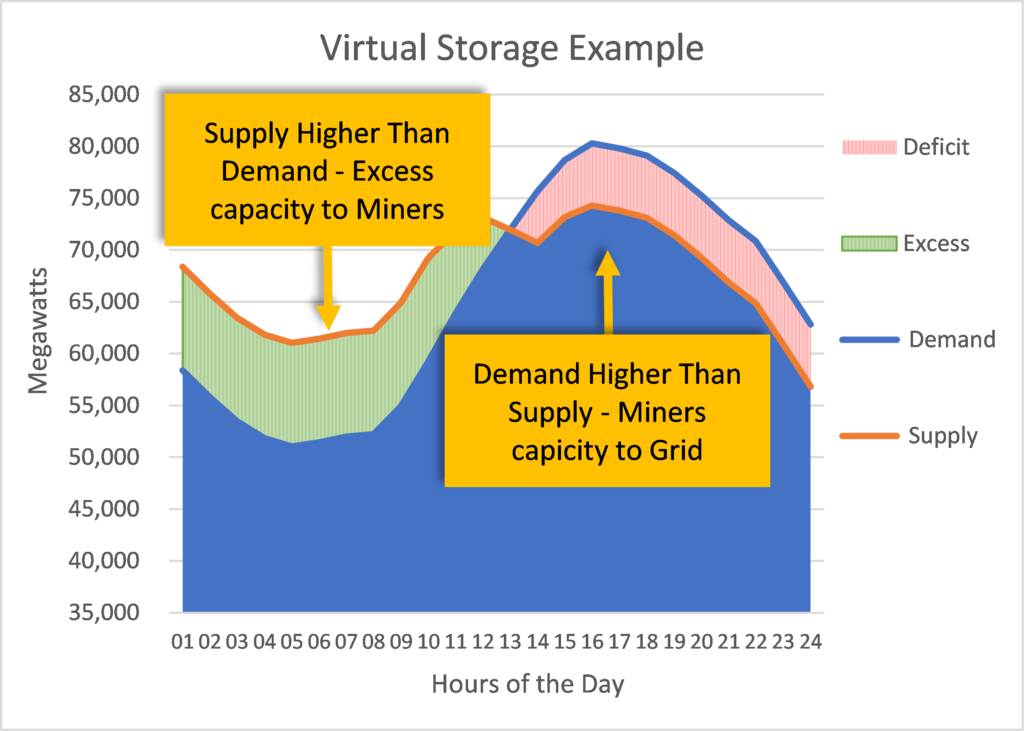Why Renewable Energy Can’t Survive Without Bitcoin

One of the key pillars of Environmental, Social, and Governance (ESG) is curbing carbon emissions by reducing or eliminating fossil fuels. Efforts are underway to transition America onto relying 100% on renewable energy. To do this, we need to overcome several significant obstacles. Notwithstanding, cryptocurrencies like Bitcoin are very energy intensive. From mining to maintaining a secure network, there’s an insatiable thirst for energy, and it continues to grow. So why would this unlikely pair create the perfect marriage?
Renewable Energy ≠ Reliability
The biggest issue surrounding renewable energy is the lack of reliability in electricity generation. How do you guarantee that enough electricity will be available when needed most? Matching electricity supply and demand based on wind speed or sunny days could be considered a fool’s errand. For example, the Texas energy market has tight supply/demand fundamentals.

- ERCOT’s Expect Peak Consumption and Supply Mix
- Other Category includes hydroelectric, biomass, grid interconnections and private-use networks
- Source: Electric Reliability Council of Texas (ERCOT); Federal Reserve Bank of Dallas calculations
The Electricity Reliability Council of Texas (ERCOT) believes that the grid has a total theoretical generating capacity of about 86,000 megawatts if needed. ERCOT runs a daily “dashboard” that shows the current grid and market conditions. For example, if you look on a hot Texas summer day like July 11th, ERCOT’s forecasted demand was 79,671 MW with 80,083 dispatchable MW. That left ERCOT only 412 (.005%) dispatchable MW available as “wiggle-room”. ERCOT’s push for renewable energy sources to power Texas’ grid is a great initiative, but its inability to reliably produce power and electricity is where it falls short against fossil fuels like natural gas or coal.
There is an overwhelming infrastructure and development cost to become 100% reliant on renewable energy. Not only do you need to replace the existing capacity of fossil fuels, but you would have to expand it. Due to its intermittent reliability and the lack of a scalable storage solution, baseload capacity will need to increase to the extent that it will cover the demand spikes or peaking loads. Because the power generation of renewables isn’t equitable to that of fossil fuel power generation, we estimate that approximately three MWs of renewable energy is needed for every one MW of expected demand. As the percentage of renewables increases relative to the total supply mix, that number would continue to grow exponentially. The results would be extremely costly and inefficient at best. In addition, this potentially creates a new problem. Excess energy on the grid for prolonged periods can also create outages. Thus, when demand is low, this newly created excess capacity will need to be managed and removed from the grid.
Bitcoin & Renewable Energy: Thriving Together
ERCOT estimates that crypto miners may increase energy demand by up to 6 GW by mid-2023. That is the equivalent of adding another Houston to the Texas electric grid. With valuation estimates for BTC potentially topping $100,000 within a few years, you can expect this trend to grow. With large incremental demand jumps in an already tight market, generation deficits will likely occur, resulting in blackouts and potentially grid failure.
So how does combining an excessive consumer with an intermittent energy source solve any problems? It’s all about the timing. Crypto miners should enter long-term structured contracts where the independent system operator (ISO) pays for the right to “turn off” their energy supply to the mining facility and direct it to other areas on the grid.

- “System-Wide Demand” – demonstrates demand for each hour of the day.
- “Combined Wind and Solar” – demonstrates the randomness of wind and solar generation.
- Source: Electric Reliability Council of Texas (ERCOT) Daily Dashboard

- Simplistic example of how “Virtual Storage” could be structured.
- Source: Opportune Analytics
For example, high cooling demand can cause system-wide outages during a heat wave. The ISO can alleviate the pressure on the system by using their option to “turn off the miners” and reduce demand overall demand. This excess electricity can now redirect to other areas of the grid (such as residential cooling needs). In times of excess, the miners should receive deep discounts for consuming unwanted electricity on the grid. Although this is a demand-side solution, these structured contracts, created for crypto miners, effectively become a virtual storage asset (or the equivalent of one big battery) that the ISO can now leverage. Not only can this approach “provide” power in times of high demand, but it can simultaneously alleviate excess capacity when demand is low. Crypto miners are the buyer of last resort.
This unique relationship is beneficial to everyone. A viable “virtual” storage solution reduces the overall amount of infrastructure needed to balance an all-renewable grid, saving consumers money. Additionally, this approach would promote a stable electric grid and price environment during a time of renewable energy expansion and/or reduction of fossil fuels. Further, it can provide crypto miners with long-term discounted production costs while championing the ESG movement.
Related Insights
Our experts are here
for you.
When you choose Opportune, you gain access to seasoned professionals who not only listen to your needs, but who will work hand in hand with you to achieve established goals. With a sense of urgency and a can-do mindset, we focus on taking the steps necessary to create a higher impact and achieve maximum results for your organization.
LeadershipGeneral Contact Form
Looking for expertise in the energy industry? We’ve got you covered.
Find out why the new landmark legislation should provide a much-needed boost for the development of carbon capture.






